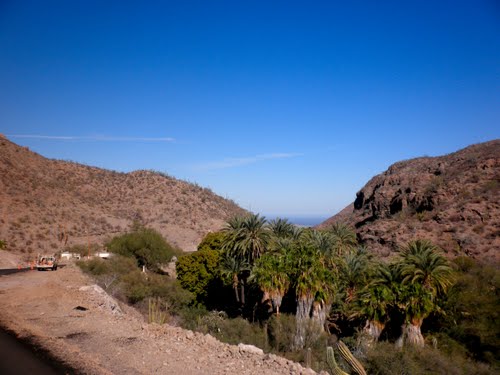From TKWB - Traditional Knowledge World Bank
Jump to navigation
Jump to search
| LOCAL APPLICATION OF THE TECHNIQUE |
 |
| Technique: |
TYPOLOGIES OF OASIS SETTLEMENTS |
| Local name: |
Baja California Sur, MEXICO |
| Site: |
Baja California Sur, MEXICO |
|
Location

Click the globe to see the techinique on Google Map
|
Continent: North America
Country: Mexico
Site: Baja California Sur
Coordinates:
Lat:
26.03
Long:
-111.64 |
Description of the local variant of the technique
As several studies have reported (mainly by L. Arriaga, A. Breceda , M. Cariño, R. Coria, C. Fernando-Aceves, R. Rodríguez-Estrella and M. RodríguezRodríguez, among others), there are 171 oases in Baja California Sur. Although these oases represent only 1% of the total territory, they include a great biological-diversity. Nowadays, the main difference between North-African oases and Baja California Sur oases is that in this last area oases have almost lost the main function they still have in the other area, this means that they have no agriculture. On the other hand, however, they have enhanced their role as a humid area in an arid environment, consequently becoming important refuges for endemic species, birds, etc. The important role they now play fully justifies their protection. If we accept the concept of the oasis as a man-made environment created for agricultural purposes, the origin of Baja California Sur is attributed to Spanish missionaries, during the XVIII century. It is said that they introduced date palms since the shadow created by the palms increases humidity and enables the development of agriculture. Agriculture may be introduced in this area thanks to the shadow created by palms, as is the case in other continents. The main purpose in creating oases was to create irrigated areas that would help to built permanent settlements and consolidate the Spanish and Christian presence in this arid environment. During the 19th and 20th century, whilst some oases were productive and well managed, others suffered from over-exploitation and water depletion. Nowadays, a significant number of scientist and local people have proposed areservation of the oases. This group has developed this oases Initiative with the aim of presenting an important project on sustainable development and conservation focusing especially on the oases' agricultural, biological, cultural and economical wealth, and in an attempt to have these oases included in the UNESCO World Heritage List.
Survival prospects
Images

Deepening
|
TRADITIONAL TECHNIQUE DATA
| Author: |
| Sabina Asins-Velis - Centro de Investigaciones sobre Desertificación-CIDE |
|
| Other authors: |
|
| Reference: |
|
|
|